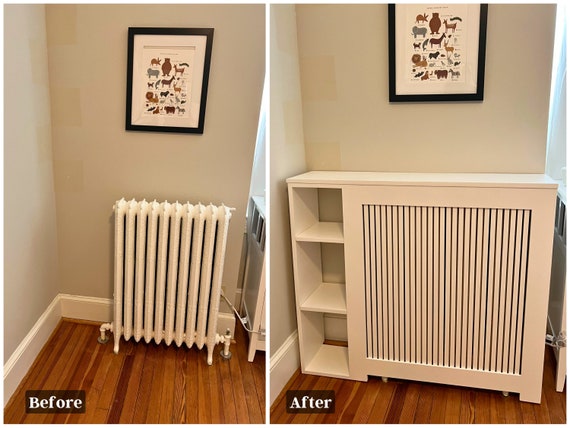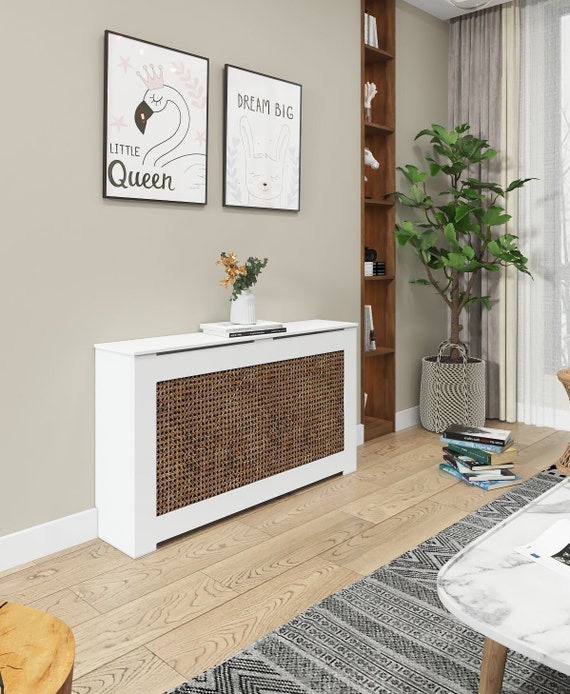5 Easy Facts About Radiator Covers Shown
3 Simple Techniques For Radiator Covers
Table of ContentsThe Best Guide To Radiator CoversRadiator Covers for DummiesAn Unbiased View of Radiator CoversRadiator Covers - The FactsThe Facts About Radiator Covers RevealedNot known Details About Radiator Covers
Over at the Old Residence Web, Amy Hayden covered 5 Benefits to Utilizing Radiator Covers. This has begun a little bit of a discussion: Are rad covers valuable or do they throw away energy? Hayden created, "Radiators are a good resource of heat, however they additionally use up beneficial square video footage ...They might be called radiators, but they must probably be called convectors, considering that the mass of the heat that we obtain from a conventional rad is relocated by convection. In convection, air warmed between the fins of the radiator increases to the ceiling and is bossed around the room in a circle.
Radiator Covers Fundamentals Explained
Hayden created, "Radiator covers with the appropriate backing can distribute warmth more effectively than an uncovered radiator. As opposed to the warm going straight to the ceiling, the back enables it to be pressed right into the space." Lloyd Alter It holds true that radiators ought to have a proper reflective backing; I utilize foil-faced bubble cover insulation; it mirrors a little of the emitted warmth that would certainly have been taken in by the wall surface back into the room and the radiator.
Radiator covers can be valuable in older buildings designed after the flu epidemic of 1918 - radiator covers. Then, as is the situation currently, health and wellness officials believed that fresh air was the method to prevent getting illness and that individuals must sleep with open home windows. Dan Holohan creates in "The Lost Art of Steam Heating" that in New York City City, the Board of Wellness bought that home windows ought to remain open at all times, and the radiators were made to keep buildings cozy on the coldest day of the year with the windows open
Excitement About Radiator Covers
Some radiators, like copper finned modern rads, included indispensable covers, often with dampers to adjust the convection; they, like steam rads, need covers because they are too hot to touch. For a conventional cast iron rad that one finds in old houses, connected to a hydronic system, a cover isn't required for safety and security.
, Holohan noted that some radiators can get alarmingly warm. He defined a claim where a kid rolled off the bed and got stuck in between the radiator and the bed and experienced severe burns.
As a normal heating appliance, radiators are not there merely to look quite but to maintain your home warm using all-natural convection. Nevertheless, with more focus on interior decoration, these home appliances can prove undesirable and sidetrack from the rest of the meticulously plotted visual appeals of an area. To line up a radiator to the design of the remainder of your room, you can cover one up though this does include implications for the heating.
A radiator cover is basically a method of covering up a radiator to cover it from view (radiator covers). Wood is considered the most usual product for a radiator cover as it simply looks far better.
Everything about Radiator Covers

Not just can they childproof the home appliance and include a visually pleasing layout, however a radiator cover can additionally add additional storage area, particularly in the shower room. With a flat surface, you should be able to save soaps and fragrances to maintain them within very easy reach. By repurposing the space, the radiator cover can come to be a makeshift mantelpiece.
That is certainly the situation with radiator covers and they can limit the efficiency of your central heating unit. By interrupting the flow of cozy air and the all-natural convection, you can experience warm loss and get to for the thermostat when you truly must not need to. Efficiently, a radiator cover can cost you cash by exceedingly spending on heating you are not appreciating.
Excitement About Radiator Covers
These include bleeding the radiators, applying reflective support, and maintaining a gap for the radiator. Most homes ought to be bleeding their radiators at least annually. The job aids to get rid of any kind of trapped air which can be protecting against the warm water from navigating the device. It additionally just takes a min or two to bleed a radiator and is a foolproof method to enhance its effectiveness.
Radiators work by natural convection, as cold air sinks to the base of the wall surface, it enters contact with the radiator after that warms up and increases as the air becomes much less thick. The warm air effectively warms up an area. Nevertheless, if you were to put things following to the radiator, such as a sofa, or border one with a radiator cover, after that this would hinder the all-natural convection and you would not have the ability to feel the full advantages of the heating.
Radiator covers may be an excellent choice if you have young kids running about and need a means of avoiding them from burning themselves on the warm surface. While a cover needs to look great to hide a radiator, any type of product that obstructs a heating home appliance will minimize its effectiveness. To give a total layout, the radiator cover ought to look at the valves, as well as the heating unit and pipes.
Excitement About Radiator Covers

And thats my question: just how do I tackle figuring out if my radiators should have covers? I have a friend that thinks the problem is simple: a cover catches the warm, so removing the cover will permit the warm to better get in the space and will make the radiator extra reliable.
And thats my inquiry: exactly how do I set about finding out if my radiators should have covers? I have a pal who thinks the problem is simple: a cover catches the heat, so getting rid of the cover will certainly allow the warm to better get in the space and will certainly make the radiator much more efficient.
Which my question: exactly how do I set about identifying if my radiators should have covers? I have a pal that believes the concern is easy: a cover catches the heat, so getting rid of the cover will enable the heat to much better get in the space and will make the radiator read more a lot more efficient.